Introduction:
Hey there, farmers, drone service providers, and ag researchers! Today, we're diving into a topic that's reshaping the agricultural landscape – blockchain technology. I'm Mike, and I'm here to guide you through the exciting intersection of blockchain and farming.
Chapter 1: What is Blockchain Technology?
Unveiling the Blockchain Revolution:
Blockchain technology, initially known for cryptocurrencies like Bitcoin, has evolved into a powerful tool with applications far beyond finance. At its core, blockchain is a decentralized, immutable digital ledger that records transactions across a network of computers. Here's how it works:
Decentralization: Unlike traditional databases controlled by a central authority, blockchain operates on a network of computers (nodes), making it highly resistant to tampering and fraud.
Transparency and Security: Every transaction is recorded in a "block" that's linked to the previous one, creating a chain. Once recorded, data cannot be altered, ensuring transparency and security.
Chapter 2: Transforming Agriculture with Blockchain
Blockchain Meets Farming: A Perfect Match:
Now, let's explore how blockchain technology is making its mark in agriculture:
Supply Chain Transparency & Management: One of the main benefits of blockchain technology for the agriculture industry is improved supply chain management. The supply chain for agricultural products is often complex, involving multiple parties, including farmers, distributors, and retailers. By using a blockchain-based system, each participant in the supply chain can record and verify every step of the process, from the farm to the consumer. This can help to create a tamper-proof and transparent supply chain management system that can improve the efficiency, quality, and safety of agricultural products.
Food Safety: Blockchain technology can also help to ensure the safety of agricultural products. With the help of blockchain technology, every participant in the supply chain can record safety standards and tests performed on food products. This information can be made available to consumers, helping to build trust and confidence in the safety of the food they are consuming. By creating a transparent and immutable record of food safety, blockchain technology can help to prevent fraud and improve the overall quality of agricultural products.
Traceability: Traceability is another important benefit of blockchain technology for the agriculture industry. With the help of blockchain technology, farmers can track their crops from seed to harvest, recording all necessary information such as location, time, and fertilizers used, etc. This information can help to improve the efficiency and quality of crop production. Additionally, consumers can trace the origin of the food they are consuming, which can help to build trust and confidence in the agricultural industry. Consumers can scan a QR code on a product to learn about its origins, fostering trust and confidence in the food they consume.
Payment Systems: Blockchain technology can also help to create more secure and transparent payment systems for agricultural transactions. By using blockchain technology, farmers can receive payments directly from buyers without the need for intermediaries. This can help to reduce transaction costs and increase the income of farmers. Additionally, the use of smart contracts can ensure that payments are made automatically when certain conditions are met, providing greater security, and reducing the risk of fraud.
Smart Contracts for Fair Trade: Smart contracts, self-executing contracts with the terms of the agreement directly written into code, are automating processes like payments to farmers based on predefined conditions. This ensures fair compensation and reduces the need for intermediaries.
Crop Insurance and Risk Management: Blockchain-based platforms are providing a secure way to manage crop insurance and payouts. Smart contracts can trigger automatic payouts when predefined conditions like adverse weather events are met, helping farmers recover from losses more quickly.
Chapter 3: Real-World Success Stories
Blockchain in Action: Case Studies:
Let's look at real-world examples of how blockchain is transforming agriculture:
Walmart's Food Trust: Walmart, one of the largest retailers globally, uses blockchain to track the journey of leafy greens from farm to store shelves. This ensures swift response to food recalls and promotes freshness.
AgriDigital: AgriDigital, an Australian startup, employs blockchain to streamline grain trading. Farmers can sell their grain directly to buyers, and the blockchain handles contracts, payments, and quality assurance.
Coffee Farmers in Ethiopia: Blockchain has been employed to connect Ethiopian coffee farmers with international buyers, ensuring fair prices and traceability for premium coffee beans.
Chapter 4: Overcoming Challenges and Looking Ahead
Challenges and Future Prospects:
While blockchain holds immense promise for agriculture, challenges like scalability, data privacy, and education must be addressed. However, the future is bright:
Interoperability: Efforts are underway to make different blockchain systems compatible, allowing seamless data sharing across platforms.
Data Privacy: Solutions like zero-knowledge proofs are being explored to protect sensitive data while still benefiting from blockchain's transparency.
Education: Farmers and stakeholders need to be educated about blockchain's potential and how to use it effectively.
Conclusion: Cultivating a Digital Future
In conclusion, blockchain technology is planting the seeds of a digital revolution in agriculture. From supply chain transparency to fair trade and risk management, blockchain offers innovative solutions to age-old challenges. As we move forward, collaboration and education will be key to harnessing the full potential of blockchain in farming.
Feel free to reach out if you have questions or want to explore specific aspects of blockchain in agriculture further. The future of farming is digital, and blockchain is leading the way!
